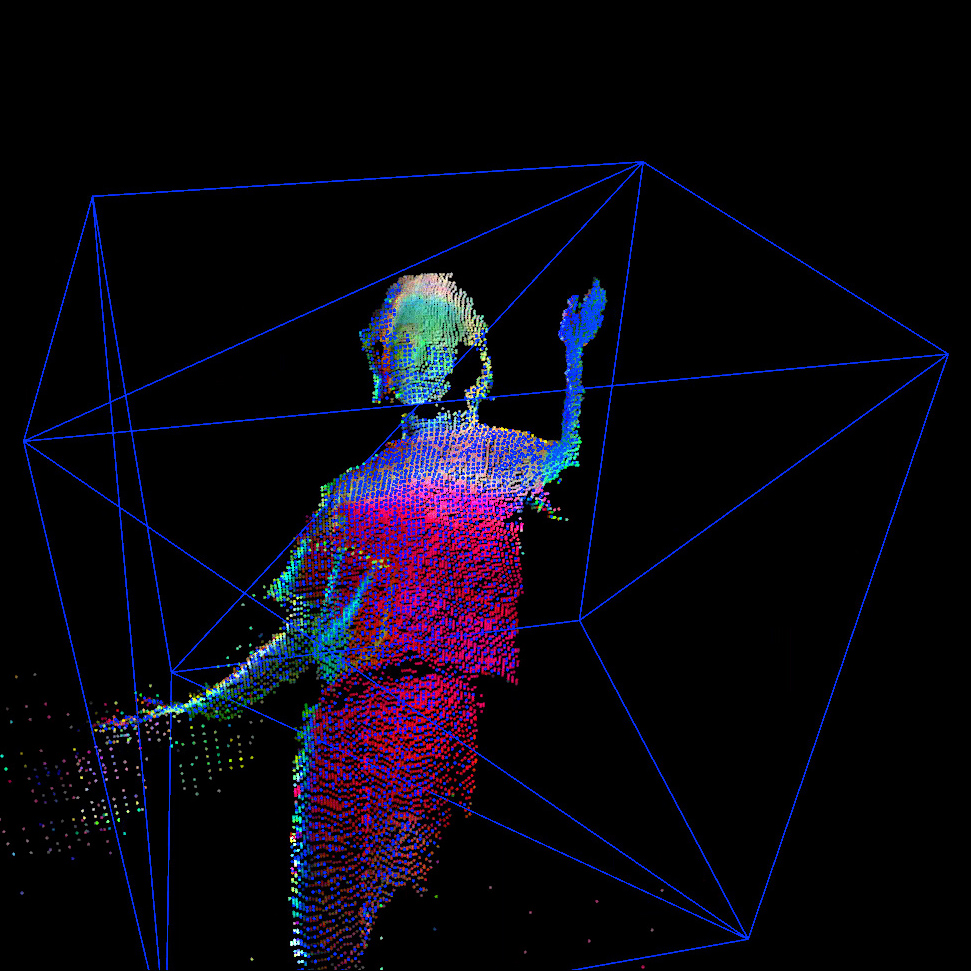
KIBLIX 2020–2021: Virtual Worlds Now, part II
The international group exhibition presenting a critical overview of contemporary virtual spaces through a series of innovative art research projects in the field of the latest virtual, augmented, and mixed reality technologies.
Private View on Friday 1st of October 2021, 7 – 10pm
Open to public 1 October – 30 November 2021
KIBLA PORTAL
Valvasorjeva 40, 2nd floor
Maribor, Slovenia
– – > Time of Flight
interactive intermedia installation, 2021
The Time-of-Flight principle (ToF) is a method for measuring the distance between a sensor and an object, based on the time difference between the emission of a signal and its return to the sensor, after being reflected by an object. ToF cameras and other infrared/ultraviolet sensors are increasingly common additions to smartphones, generating 3D images used for facial recognition, enhancing photos, blurring out backgrounds and depth of field effects while having other applications in gaming, surveillance, object classification, and automotive contexts.
When integrated with other hardware and software, these sensors have the potential to affect our lives at different intensities, speeds, and scales. Our engagement with them can be emotional and considered. We tape over them to protect our privacy, but our conscious interaction and level of understanding rarely go beyond such an ad-hoc interaction.
Kinect motion sensors developed by Microsoft are now officially discontinued, despite notable popularity in open source communities; however, they do »live on« more ubiquitously than ever, albeit in less accessible forms. PrimeSense, the company that initially developed the irregular infrared dotted pattern principle that drove Kinect, is now owned by Apple. The iPhone X and later models include a remarkably similar system in its front-facing camera array for the Face ID phone unlocking feature. Other phones also offer alternative solutions.
This interactive installation provides an opportunity for a different understanding of our personal experiences with devices, such as telephones, computers, and game consoles; by deconstructing and re-presenting fundamental processes behind machine vision tasks in real-time via Kinect, opening up possibilities for productive play and learning.
The Time of Flight installation has been developed using OpenFrameworks, OpenCV and notably uses our adapted version of the ofxKinectBlobFinder plugin by David Sanz Kirbis.

